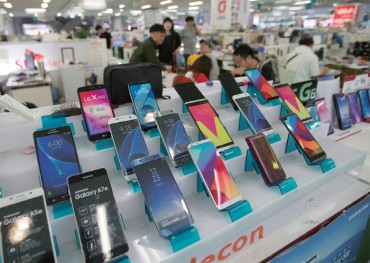
Dark patterns refer to design and user interface techniques intentionally crafted to manipulate or deceive users into making specific choices or taking actions that may not be in their best interest. (Image courtesy of Yonhap)
SEOUL, Nov. 7 (Korea Bizwire) – A survey has revealed that deceptive ‘dark patterns’ persist at online shopping portals, leading consumers astray.
Dark patterns refer to design and user interface techniques intentionally crafted to manipulate or deceive users into making specific choices or taking actions that may not be in their best interest.
The Korea Consumer Agency disclosed on Monday that it had conducted a fact-finding survey covering 76 websites and mobile apps from 38 online shopping portals during the period from April to August. The results showed the presence of 429 cases of dark patterns, averaging around 11.3 cases per online shopping portal.
The most prevalent type was the notification of purchases made by other consumers, with 71 cases, followed by the use of emotional language (66 cases) and notifications of time-limited purchases (57 cases). These dark patterns aim to exert psychological pressure to encourage purchases.
Out of the total, 188 dark patterns raised significant concerns about causing actual harm to consumers.
Among these, there were 37 cases of ‘advanced selection of specific options,’ where high-priced items were pre-selected, and 34 cases of ‘hidden information’ that led to consumer confusion by displaying minimum or maximum purchase amounts during the selection stage.
Additionally, there were 22 cases of ‘bait and switch,’ where customers were enticed with low prices, but the items were unavailable, and 20 cases of ‘false recommendations’ that displayed reviews for other products instead of the ones consumers intended to buy. Furthermore, there were 15 cases of ‘false discounts’ that provided misleading discount information to encourage purchases.
In one instance of a false discount, a body lotion priced at 9,410 won per unit was falsely presented as a ’1+1′ package, selling for 26,820 won.
Ashley Song (ashley@koreabizwire.com)






